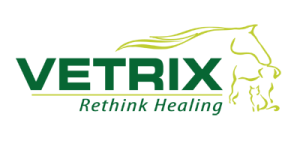 Veterinary medicine is constantly changing and evolving. We’re thankful for the innovation, but as new technologies and treatments are developed, it impacts how we care for animal patients. Keeping up with the ever-expanding veterinary world can be overwhelming. To make keeping up with the best veterinary care available easier, we’d like to share a short list of three trends to watch in 2023.
Veterinary medicine is constantly changing and evolving. We’re thankful for the innovation, but as new technologies and treatments are developed, it impacts how we care for animal patients. Keeping up with the ever-expanding veterinary world can be overwhelming. To make keeping up with the best veterinary care available easier, we’d like to share a short list of three trends to watch in 2023.
Technology
Specifically AI technology. AI is a big trend impacting veterinary medicine as we witness its increased use first-hand. Artificial intelligence may not yet be at a level to assist with surgeries, but it can expedite diagnoses and relegate tedious tasks. Veterinarians embracing AI bots can help free up their veterinary technicians, spending long hours inputting health records, to answer questions and focus on better patient care. AI technology is also helpful for scheduling appointments and automated reminders via text messages, email, and phone calls. Beyond administrative help, more and more veterinary offices are embracing AI to help interpret pet data through EKGs, X-Rays, MRIs, and more.
According to a medical technology survey by Statista, AI in veterinary health care was fully functional by 2021. Hence, the usage of AI in veterinary medicine is growing across a range of applications like imaging, disease predictions, cancer treatments, and radiology. AI Technology empowers veterinarians, pet parents, and the medical community to provide the best possible care to patients.
Synthetic Biology
Synthetic biology involves redesigning or constructing biological entities to carry out desirable biotechnological processes. For example, Vetrix BioSIS is a bioresorbable material that uses an extracellular matrix (ECM) derived from porcine small intestine submucosa (SIS). It replaces and repairs flesh at the wound site by working with the body’s natural healing process.
The ECM works as a biological scaffold for cells to migrate to and regenerate. It’s the perfect environment for cells to reproduce since it’s also made up of cell tissue. It also provides excellent structural support to native cells to form organized tissue. As the cells lay down their collagen, robust and permanent tissue repair occurs. Because ECM is a biomaterial, there’s no foreign material left behind in the patient’s body as natural self-renewal occurs. This also means there’s no calcification, tissue erosion, or encapsulation that synthetic materials can cause.
More opportunities are regularly arising to use synthetic biology in veterinary medicine for wound management, gastrointestinal soft tissue repair, thoracic wall repair, hernia repair, degloving injuries, mass removals, and more.
Cell and Gene Therapies
Cell and gene therapies are used in various approaches to treat disease at the cellular and genetic levels. Most approved cell therapies in the U.S. focus on blood cancers. However, one of the next goals in cell therapy is to improve efficiency by reprogramming cells in vivo — inside their bodies. The medical community is expecting big things in 2023. Meanwhile, the field of gene therapy faces a pivotal year in 2023 that will likely bring new treatments (and challenges). Medical professionals are excited about the progress being made. Still, many are keeping an eye on pricing and its impact on vets and their patients. A lot is happening in the field of cell and gene therapies and we believe it’s worth keeping an eye on.
Vetrix veterinary regenerative medicine solutions enable veterinarians around the world to provide exceptional patient care all year, every year. Learn more about affordable Vetrix technologies.




 Originally developed at Purdue University, a team of researchers discovered the regenerative capabilities of small intestinal submucosa (SIS) ECM as a material able to fully regrow tissue of various kinds. As the team of scientists imagined the possibilities of regenerative medicine, the rights to SIS were farmed to various companies throughout the human medical industry. To one company the cardiovascular rights were granted, to another SIS was given for use to treat burn and dermatologic patients, and still to another, Cook Biotech, the material has essentially been adopted as the standard of care for hernia repair. As the various applications were researched for human implications, there was a void in veterinary medicine. While the FDA requires animal clinical testing prior to human use, all applications for SIS ECM were proven through published studies in various journals of medicine. Built upon the shoulders of proven research, VETRIX was born. Today VETRIX serves as the gold standard in veterinary regenerative medicine, offering the most scientifically proven biological scaffold on the market.
Originally developed at Purdue University, a team of researchers discovered the regenerative capabilities of small intestinal submucosa (SIS) ECM as a material able to fully regrow tissue of various kinds. As the team of scientists imagined the possibilities of regenerative medicine, the rights to SIS were farmed to various companies throughout the human medical industry. To one company the cardiovascular rights were granted, to another SIS was given for use to treat burn and dermatologic patients, and still to another, Cook Biotech, the material has essentially been adopted as the standard of care for hernia repair. As the various applications were researched for human implications, there was a void in veterinary medicine. While the FDA requires animal clinical testing prior to human use, all applications for SIS ECM were proven through published studies in various journals of medicine. Built upon the shoulders of proven research, VETRIX was born. Today VETRIX serves as the gold standard in veterinary regenerative medicine, offering the most scientifically proven biological scaffold on the market.
